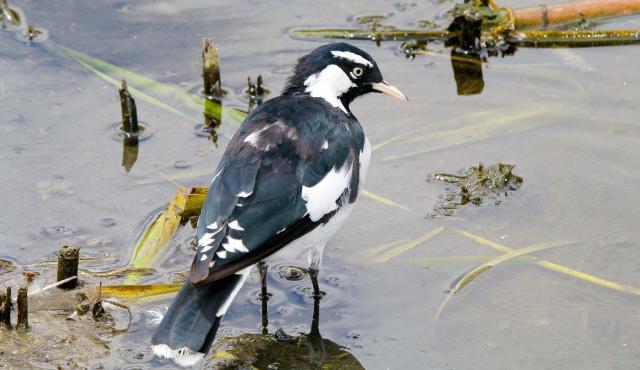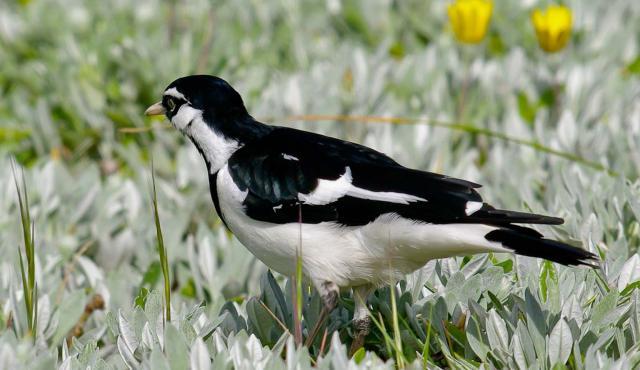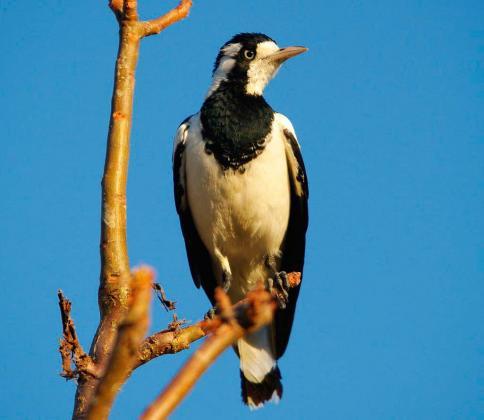



Magpie-lark
Grallina cyanoleuca
| Details | |
|---|---|
| Type | Bird |
| Group | |
| Other Common Names | Mudlark, Peewee, Little or Murray Magpie |
| Biology | Breeds from August through to February, particularly after rain. Builds a bowl-shaped mud nest, often up to 20 m off the ground in the branch of a tree. Clutch size is 3-5 eggs. Incubation is carried out by both parents for 18 days. More than one brood may be produced if conditions are favorable. Aggressively defends nest and territory. |
| Distinctive Markings | Distinguishing black and white colour. |
| Taxonomy | |
|---|---|
| Phylum | Chordata |
| Class | Aves |
| Order | Passeriformes |
| Family | Monarchidae |
| Genus | Grallina |
| Species | cyanoleuca |
Found throughout the Australian mainland but is rare and vagrant to Tasmania. Also found in southern New Guinea and Timor.
Source: Atlas of Living Australia
Magpie-larks are not related to magpies or larks.
| Interesting Facts | |
|---|---|
| Diet | Carnivore. Insects, insect larvae, earthworms, freshwater invertebrates. |
| Habitat | Diverse habitats from coastal to semi-desert. Anywhere with water and trees. Adapted well to altered environments, especially those with permanent water bodies. |
| Native Status | Native to Australia |